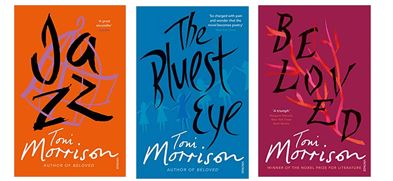Ms Holly Beckwith, acting Head of History at WHS, looks at how history can connect past, present and future.
A true heroine left the world when Toni Morrison died last August. At university, I devoured her novels and vividly remember reading The Bluest Eye, Jazz and Beloved. They connected me to another experience and a different way of viewing the world. They enabled me to see the pain and disruptive effect of trauma on consciousness and identity and feel a deep sense of empathy for fictional characters and an understanding of their experiences that I had not and could never have. In her novels, we vault “the mere blue air that separates us” effortlessly.

History is all about vaulting the mere blue air. Through studying the stories of the past, we vault the mere blue air of time and circumstance to access another, often unfamiliar and distant, experience. We connect to the human stories of the places we live and the places we travel. One of the reasons for studying the past is to render the unfamiliar, familiar, whilst simultaneously understanding the distinct otherness of the past.
What I loved about reading Toni Morrison’s novels is the powerful way she set about disrupting what we think of as familiar. In Beloved, she confronts ‘national amnesia’ on the subject of slavery in America, invoking the genre of the slave narrative and disrupting it by bearing witness to the interior lives if the slave narrator, whose story was hitherto constrained and shaped by the Abolitionist cause. She disrupts the single hegemonic narrative, using the novel as a vessel through which to tell multiple stories. She urges us to seek new connections to the past but she also views the past as something that cannot be easily contained, its remnants multiply in memory and ‘rememory’ and ghosts.
As History teachers, one of our purposes should be to disrupt the familiar and received stories of the past that are propagated in the media and public discourse. One of my lesson mantras is that asking questions about the past is just as important as constructing answers to them. While the National Curriculum in England for History aims for pupils to “know and understand the history of these islands as a coherent, chronological narrative, from the earliest times to the present day” and a secure chronological grounding is important, it is fundamental that we don’t see the past as something that can be retold as a single story.
Such epistemological concerns have been part of the debate among History teachers for years, but there has been a drive more recently to render our curricula more diverse. While our current History curriculum provision at Wimbledon High engages with multiple and varied narratives of the past (by, for example, exploring connections along the Silk Road in Year 7 or using Said’s Orientalism to question our way in which Year 13 perceive colonial encounters) there is always room for us to rethink how we can do this in new and interesting ways. This will be particular for us over the next few terms and why we are aiming to build up a wider conversation surrounding diversity and curriculum planning when we host a conference at Wimbledon this summer for History teachers within the GDST and at our partnerships schools.
Our study of the past should vault the mere blue air and seek new connections.
References
Tracy K. Smith https://www.nytimes.com/2019/08/06/opinion/tracy-smith-toni-morrison.html
Toni Morrison The Origin of Others

